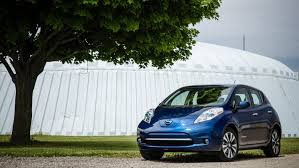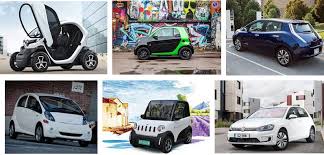Electric car for dummies: how to read the characteristics of electric vehicles
 Do you not understand the meaning of a particular definition in the characteristics of the vehicle with electric drive? If Yes, the following material is especially for you. The fact is that in the world of electric cars, some characteristics of cars have different measurement criteria, as well as completely new, unfamiliar definitions to beginners.
Do you not understand the meaning of a particular definition in the characteristics of the vehicle with electric drive? If Yes, the following material is especially for you. The fact is that in the world of electric cars, some characteristics of cars have different measurement criteria, as well as completely new, unfamiliar definitions to beginners.
We present an overview of the terms of electric vehicle topics that you probably met, but perhaps did not quite understand what they mean or found it difficult to draw analogies with the same characteristics in cars with internal combustion engines (internal combustion engine).
Electric vehicle (BEV/EV)
Battery Electric Vehicle (BEV) — this abbreviation is used to refer to a “clean” electric vehicle — a vehicle in which the energy source is the battery.ZEV
Zero Emission Vehicle (ZEV) — a vehicle with a zero emission level, that is, a vehicle that does not produce exhaust gases. All “pure” electric vehicles belong to the category of ZEV.
Plug-in-hybrid (PHEV)
Plug-in Hybrid Electric Vehicle (PHEV) is a hybrid vehicle with an internal combustion engine and an electric motor, the battery of which can be charged from external energy sources (plugged into an outlet). Battery plug-in hybrid, as a rule, has a higher capacity than conventional hybrids, respectively, drive on a clean electrician cars of this type can be much more.
Hybrid (HEV)
Hybrid Electric Vehicle (HEV) is an abbreviation for a hybrid car in which there are 2 engines: an internal combustion engine and an electric motor. The battery of hybrid cars can not be charged from external sources, so the mileage on clean electrics in hybrids is extremely small.
Electric vehicle with extended range (REX/REEV)
Range Extended Electric Vehicle (REEV) — the so-called electric vehicle with an increased power reserve, in which the energy for the battery produces a small fuel generator.
Kilowatt (kW/kW)
Measurement of electrical power, which is often written in the form of a shortened abbreviation “kW”. This value is used to indicate the power of the electric motor in electric vehicles (instead of horsepower), the equivalent of 1 kW=1.34 HP
Ampere-hour (Ah)
An ampere hour (Ah) is another unit of measurement used by some automakers to indicate battery capacity. The definition of A·h means what current is able to provide the battery for one hour.
Kilowatt-hour (kWh/kWh)
Short for “kilowatt-per-hour”, an abbreviation indicating the capacity of the battery and the measurement of electricity equivalent to the amount of energy expended in one hour per kilowatt of energy. Used to Express the power consumption of an electric car.
Battery (battery)
The most important part of any electrically driven car. A battery is a storage device and a source of electrical energy that powers the car’s electric motor. The most common type of battery for modern electric cars — lithium-ion battery (Li-ion).
Analogue to the definition in the cars with internal combustion engines — gas tank.
Cruising range
A definition that indicates how much an electric car can drive on one full charge of the battery.
The power reserve on pure electricity in electric cars is determined by several standards: EPA, NEDC, WLTP. You can find out more about the different power reserve for each of these standards here.
Exercise
The process of recharging the battery with electricity, which is performed when the electric vehicle is connected to a household power supply through a conventional outlet or to a public charging station. There are several types of charging, which in all details is written in our material “Charge the electric car.”
Regenerative braking
Brake system used in hybrid and electric cars, which allows you to accumulate (send to the battery) the energy produced during braking or deceleration. This helps to replenish the capacity of the battery, as well as stop the electric car without using the brake pedal (one pedal control).
Charging time
The length of time during which your battery is charged to 100% of its capacity.
State of charge
A definition that refers to the meter on the dashboard that shows the remaining battery charge.
Inverter
Inverter — DC to AC Converter with a change in the value of the voltage. In electric cars, the inverter converts the direct current supplied from the battery to the engine into an alternating current, controls its frequency, and hence the speed of the engine. In addition, the inverter can change the AC amplitude, which sets the output power of the motor during acceleration. Also, the inverter plays an important role in the accumulation of energy in the process of regenerative braking of electric vehicles and converts the electric current when charging the electric car.
Electronic control system
It ensures the operation of the electric motor, replacing the fuel injection and ignition system. In fact, it is a key control element of the electric vehicle responsible for:
tracking energy used;
control of energy received from regenerative braking system;
the traction control;
providing the necessary control mode;
assessment of charge level;
voltage control.
Reducer
Unlike cars with ice in clean electric vehicles there is no gearbox, it replaces the gearbox, which is responsible for the conversion and transmission of torque to the drive of the car and controls the processes occurring in the electric drive.
The power plant of the car
It is a complex that includes the main components of the electric car driving it. This includes the battery, electric motor, gearbox. By analogy with conventional cars — a fuel tank, internal combustion engine, gearbox.
Autopilot
Autonomous control system of an electric car operating on the basis of the corresponding software. It allows you to release the driver from a number of tasks for driving, as well as provides additional safety features. The higher the level of the autopilot system, the more opportunities for Autonomous driving has an electric car.



